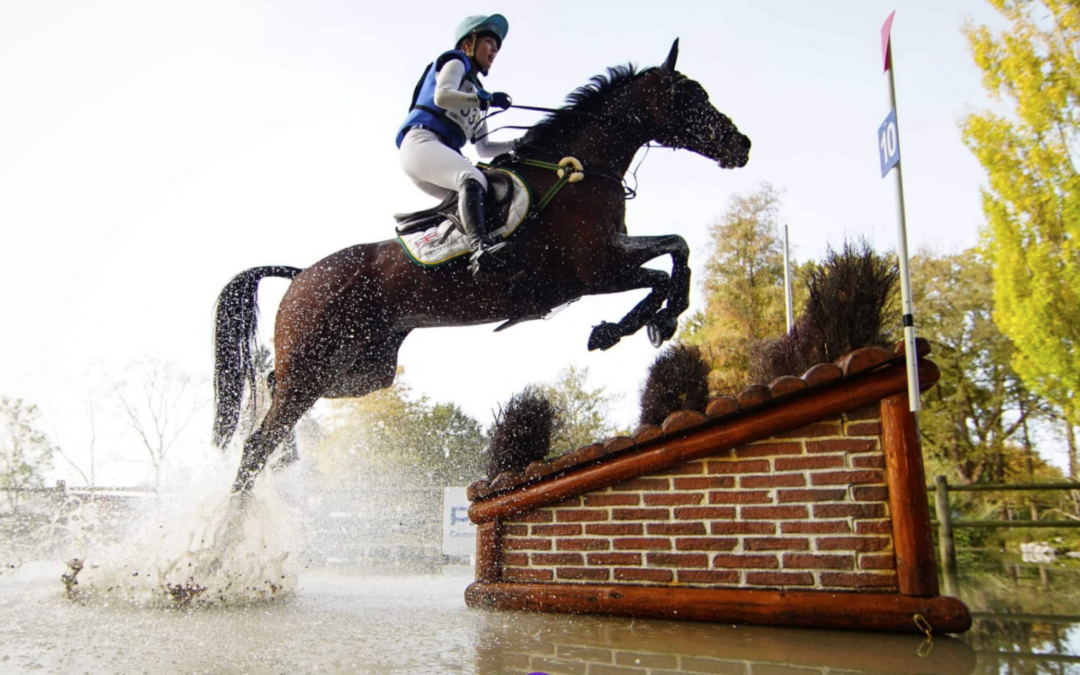The recovery of an eventing horse is a crucial component to keeping him healthy during high-intensity efforts. Eventing is one of the most demanding Olympic disciplines. It is organized into three distinct events: dressage, jumping, and cross-country.
Take, for example, the 3* or 5* competitive level. Eventing horses are recognized to be the symbol of adaptability when competing in such competitions. They must be powerful enough to jump, flexible enough for dressage, and stamina enough to perform well in cross-country and keep up the pace of a three days competition.
They are therefore athletes who are exposed to significant effort, both in training and in competition. It is essential that these horses are in the best possible state of fitness to maximize their performance and avoid the risk of injury.
Recovery is a key parameter to analyse in the horse athlete because it gives an accurate indication of the horse’s fitness at any given time, but also allows us to monitor the horse’s progress by comparing several efforts to determine if the training is optimal and fits the horse.
We will see how the recovery analysis of a CCE horse, with tools such as EQUIMETRE, can be a determining factor in the optimisation of the performance and health of such high level athletes.
Measuring Maximum Heart Rate
Before being able to determine if your horse is recovering properly after an effort, you have to quantify his work capacity. It is interesting to measure his Maximum Heart Rate during an effort (HR max). This value will be a key parameter for the study of your horse’s physiological parameters later.
The HR max is the maximum number of beats per minute that a horse reaches during an effort. This value is specific to each horse and changes slightly over time. It is measured during a high-intensity effort that will require a high energy demand.
EQUIMETRE allows you to have this data automatically recorded and compute on the dashboard
You will be able to identify the heart rate level at which your horse’s performance limits are reached. This is important data to study the evolution of the heart rate during an effort, and to adjust your horse’s training afterwards.
Studying Heart Rate
The Maximum Heart Rate is a key parameter, but it is even more important when compared to your horse’s heart rate horse during effort.
Indeed, the heart rate goes through different phases during training or competition. It will change gradually at the beginning of the effort and then drop as soon as the effort has stopped.
Let’s take the example of this horse which competes at a 5* CCE level:
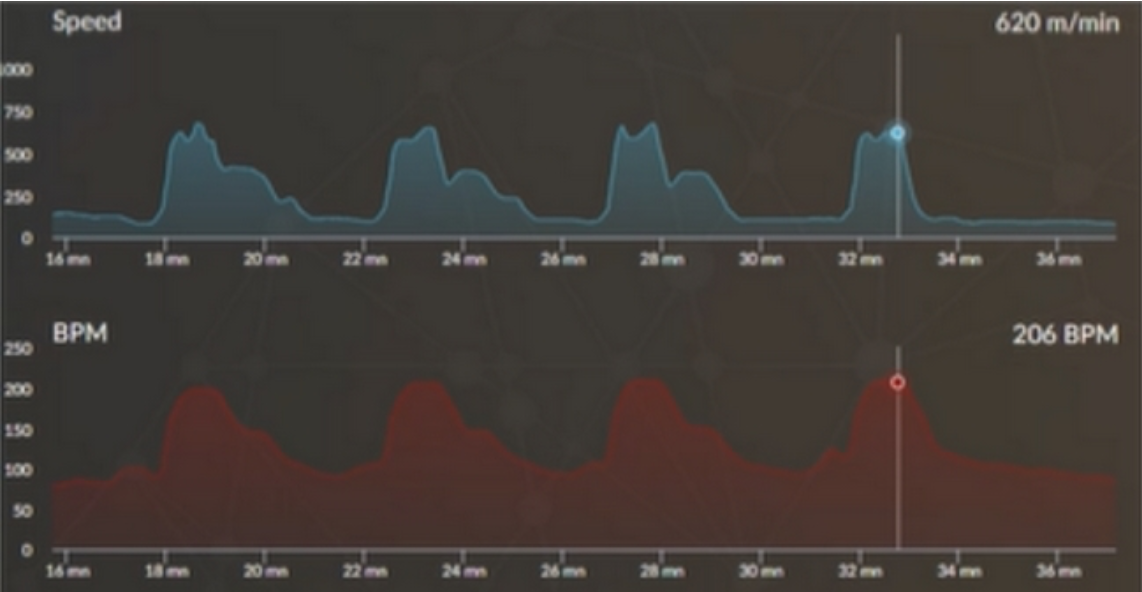
Data from the EQUIMETRE platform
His Maximum Heart Rate peaked at 206 BPM during this workout (beats per minute). Let’s see what occurs 2 minutes after the effort has stopped. His heart rate dropped to 103 BPM.
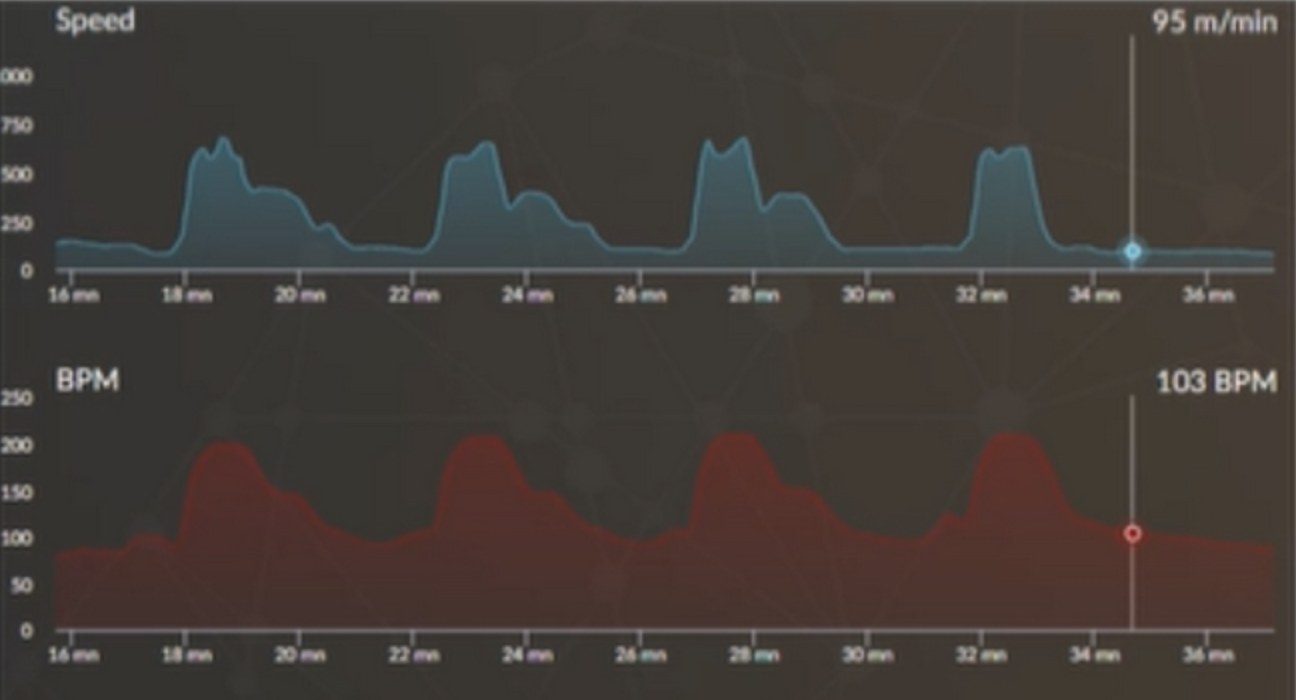
Data from the EQUIMETRE platform
To identify if a level of recovery is satisfaying, the heart rate of your horse 2 minutes after the effort is a very good indicator to analyse. It should reach 50% of the maximum heart rate.
Here we have: 103 BPM / 206 BPM = 50%.
As soon as the effort is finished, this horse almost immediately goes to 50% of his maximal heart rate, demonstrating good recovery.
Let’s now compare with a 3* horse:
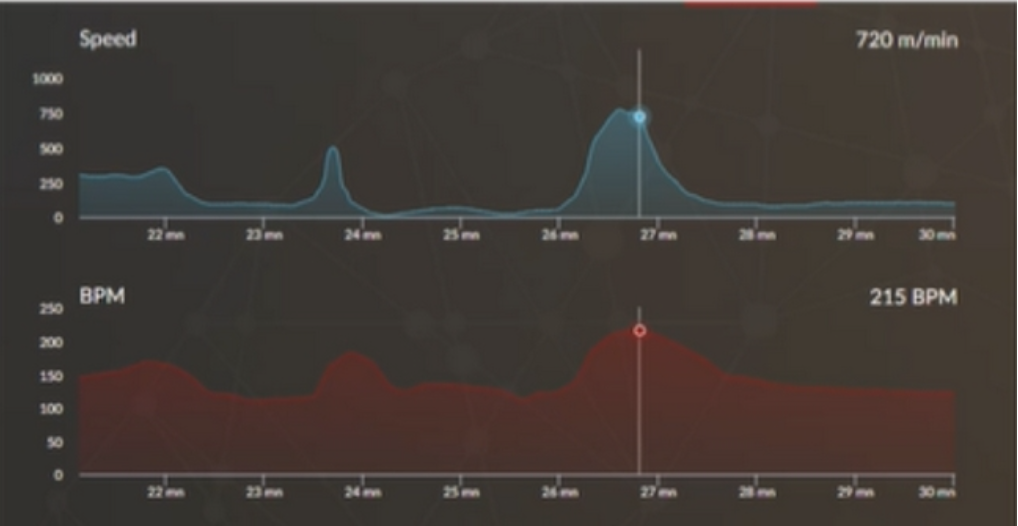
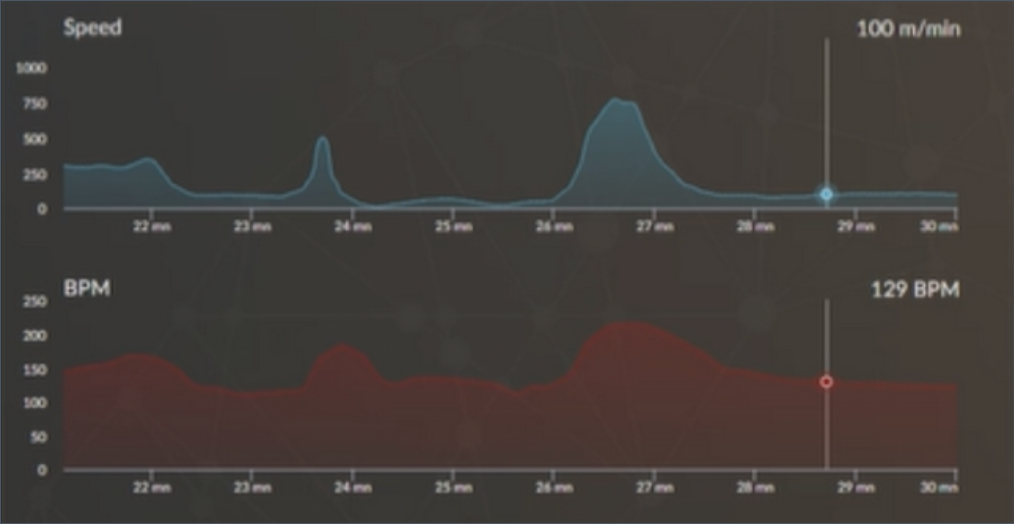
His highest heart rate level is 215 BPM, which drops to 129 BPM after the effort is over.
Let’s do the same calculation as for the 5* horse to determine the recovery level: 129 BPM / 215 BPM = 60%.
We can consider that this horse does not have a satisfactory level of recovery. A difficult recovery can be a sign of overtraining, a heart condition such as arrhythmia or a breathing problem. It is a way of detecting weaknesses before an underperformance or accident occurs. If the horse does not improve, it may be interesting to send these data and the ECG collected by EQUIMETRE to your veterinarian for more investigation.
➡️ For more information about the ECG of the athletic horse, we recommand this article.
Studying locomotion data
The horse’s locomotion is also a key indicator to observe when he is recovering from exercise. Each horse has his own locomotion, some will have a high cadence and a lower amplitude, others will have a relatively low cadence but a longer stride.
These parameters help to determine the training profile that will best suit your horse and optimise his strengths.
Stride frequency, speed and stride length, as well as heart rate, are key indicators to detect an anomaly during warm-up and recovery. Monitoring the horse’s locomotion over the season can therefore highlight disorders in the locomotor system and be useful for prevention.
An abnormal variation in stride frequency, speed or heart rate can be a warning sign. They can be used to detect chronic fatigue, to prevent fractures and to detect respiratory problems or cardiac arrhythmias. A horse that will increase his stride frequency and heart rate, reduce his stride length when he is not at a high level of effort, may have an issue. EQUIMETRE allows you to see these small changes, thanks to the monitoring of training sessions.
However, it is important to remember that in eventing horses, the analysis is a little more complex. This is especially true for cross-country, where the horse must deal with a wide range of speed and stride frequency changes. These data must be analysed with the conditions of the field.
Conclusion
Analyzing the recovery of the eventing horse is very relevant because he is subjected to a high level of effort, putting its heart and limbs under long and intense stress. Heart rate and locomotion are important parameters to observe on a daily basis in order to ensure that these athletes are in good shape and to prepare for each sporting event. The study of recovery also makes it possible to understand the difficulties of some specific tracks, particularly in cross-country, and thus to adapt training according to them.
Key words: recovery, eventing, cardiogram, locomotion

